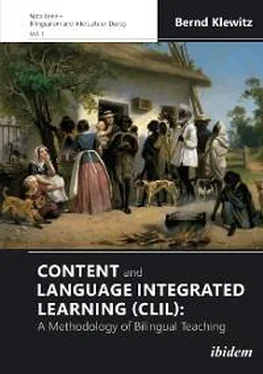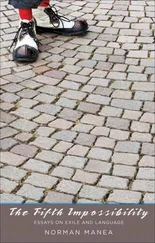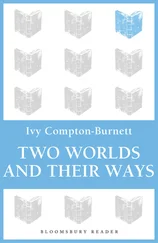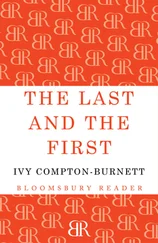Empirical justifications for qualifying a language as ‘weak’ or as ‘non-dominant’ commonly refer to one or more of the following observations: a) The language in question is rarely or not at all used actively; b) the other language is strongly preferred; c) the development of the allegedly weak language is less advanced than that of the other language (ibid.: 130).
The strong point pertinent to the DSH is, then, that bilingual children do not move through stages to be eventually able to distinguish between two languages. On the contrary, they are able to have two language systems and are aware which system is related to which language (cf. Bradley: 2020 n.p.). There are recent studies that ascertain bilinguals’ capacity to use the correct system for each language without “mixing” them, and an individual’s capability to differentiate which language is spoken—Ava’s example comes to mind—and a test showing that bilingual children responded with the same language spoken to them (cf. ibid. and Genesee: 1996).
This shows us that bilingual children under the age of two could differentiate the language being heard and respond with the same language, which supports the idea that children have two different language systems (Bradley: 2020 n.p.).
How code-switching and the concept of interlanguagecan be accounted for is part of the challenges still connected with CLIL and dealt with in a final look at desiderata of this approach (chapter 10).
Overall and also according to the MHH-Review, studies provided a mixed and complex picture in terms of the relationship between mother tongue (L1) and the foreign language (L2) acquired. Established was some transfer from L1 to L2 and vice versa and hence the existence of two language systems, not independent but inter-connected. The question of a unitary phonological system was regularly abandoned in favor of the evidence of two separate systems by a majority of the studies reviewed. The observation that phonemes are shared in both languages was substantiated by the experience that they are acquired in one language before another. This interconnectedness does not only account for the fact that researchers found robust evidence for transfer from the dominant language to the language acquired later (L1 to L2), but was also mirrored by the existence of only two older studies (from the 1970s and 1980s) arguing for a unitary language system. This is to say that empirical data help to determine the validity of language acquisition theories of past and present to a degree that is relevant for teaching bilingual programs at schools.
1.6 The Unitary Language System Hypothesis
Its predecessor models go back to scientists like Noam Chomsky and his Universal Grammar proposals that it was commonly thought that children learning two languages simultaneously during infancy go through a stage where they cannot differentiate their two languages. Bilingual children, in other words, mix elements from their languages regularly. The empirical basis of this assumption was re-examined in the 1990s (see above: Genesee study 1996) with the result that from the beginning bilingual children develop differentiated language systems and are able to use their developing languages in contextually sensitive ways. In this context it is important to remember that code-switching is not a sign of a strong language (L1) dominating the weak one (L2) or even leading to the aforementioned “ macaronic language mix ” (Meisel: 8, 58), but rather signifies the competence of bilinguals to choose their language according to who and why they are talking to, and in which situation.
Equally important is the possible role of parental input in the form of mixed utterances and its opposite, the “ one person, one language” ( OPOL) method. Since the beginning of research on bilingual development, which the bilingual guide book (Meisel: 86) situates in the middle 1910s, OPOL has played a major role. It has been modified much later, and in a German context, by the well-known “ enlightened monolingualism approach ” (Butzkamm: 2019 “ Aufgeklärte Einsprachigkeit ”) and is still an issue in both bilingual theory and CLIL strategies. Without science-based evidence, the OPOL approach is recommended because “ this principle or method is based on common-sense considerations rather than reflecting insights into mechanisms underlying bilingual acquisition ” (Meisel: 87). Accordingly, Meisel’s guide book does “ not recommend mixing languages freely in child-directed speech ” (ibid.: 118):
This is to say that adult interlocuters should make it a habit to adhere to one language in addressing the child, in accordance with the OPOL principle, keeping in mind, however, that it is a useful strategy, not a dogma. Language mixing or switching is thus not excluded, since there is no reason to be concerned about potential effects of mixed speech on bilingual acquisition. On the contrary, code-switching, inserting nouns from the other language, etc. can facilitate or even improve communication (ibid.: 118 f).
In how far the OPOL principle should also be applied to teaching CLIL programs, where the instructor needs to choose the appropriate strategy to scaffold the learning process, and ensure comprehensible input as well as maintain effective communication, would have to be considered separately. It is true that the question of mixing languages is not only a phenomenon in early childhood bilingualism but becomes even more relevant when looking at successive bilingualism as in CLIL. As far as the latter is concerned, the use of L1 and L2 in teaching situations is still a matter of contentious debate among researchers and instructors, whether supporting enlightened monolingualism or not, and will be dealt with in looking at the challenges and desiderata of bilingual teaching (see chapter 10).
Review—reflect—research
Compare the risks and benefits of childhood bilingualism.
Discuss the “experiment” of the young couple from Southern Germany. Would you bring up your children bilingually if given the opportunity? Why/why not?
Find out more about the debate of using L1/L2 in bilingual teaching programs. What is your inclination?
1Some authors prefer the label “multiculturalism” in accordance with the European Commission to accommodate “Europe’s linguistic diversity” (cf. https://ec.europa.eu/education/education-in-the-eu/council-recommendation-improving-teaching-and-learning-languages_en. Last viewed 03/05/2021.).
Chapter 2
Nativist and Cognitive Positions
Vignette “Language is the dress of thought”
Mixing languages on the very same island is, of course, a well-known historical phenomenon and could become a serious political problem as well, like in the case of the United Kingdom of Great Britain and Northern Ireland, where English and Gaelic were spoken in the Northern parts to a great extend. But then English had gradually replaced Scottish Gaelic in the 18th century, because the latter was heavily suppressed during the infamous Highland Clearances following the Jacobite uprisings which ended with their defeat at Culloden in 1746 1.
The leader of the Jacobites, mockingly called “ Bonny Prince Charlie ”, had failed in his attempt to restore the Stuart dynasty—rulers for over three centuries—and was chased by a victorious English army throughout the Highlands. Disguised as a servant maid he was finally smuggled on a boat to the Isle of Skye by Flora Macdonald, in whose house he stayed for some time during 1746 and eventually fled to Rome where he died in poverty and as a drunkard.
Almost thirty years later (in 1773), Samuel Johnson overcame his resentment to the Scots and embarked on his famous 3-month Tour to the Hebrides. 20 years before, the English poet, essayist, and literary critic had just about finished a major publication: Johnson’s Dictionary turned out to become a standard lexicon for more than 150 years and formed the basis for all subsequent English dictionaries, namely the Oxford English Dictionary in the 1900s. After the final publication in 1755 he was given a doctorate and hence was often referred to as Dr. Johnson. His interest in languages went much further than presenting the meaning of words and their etymology, but typically included personal remarks and opinions, with even some derogatory comments about his Northern neighbors; a case in point is his definition of “ oats ”—usually referred to as a cereal used as food—: “ A grain, which in England is generally given to horses, but in Scotland supports the people ” 2.
Читать дальше












